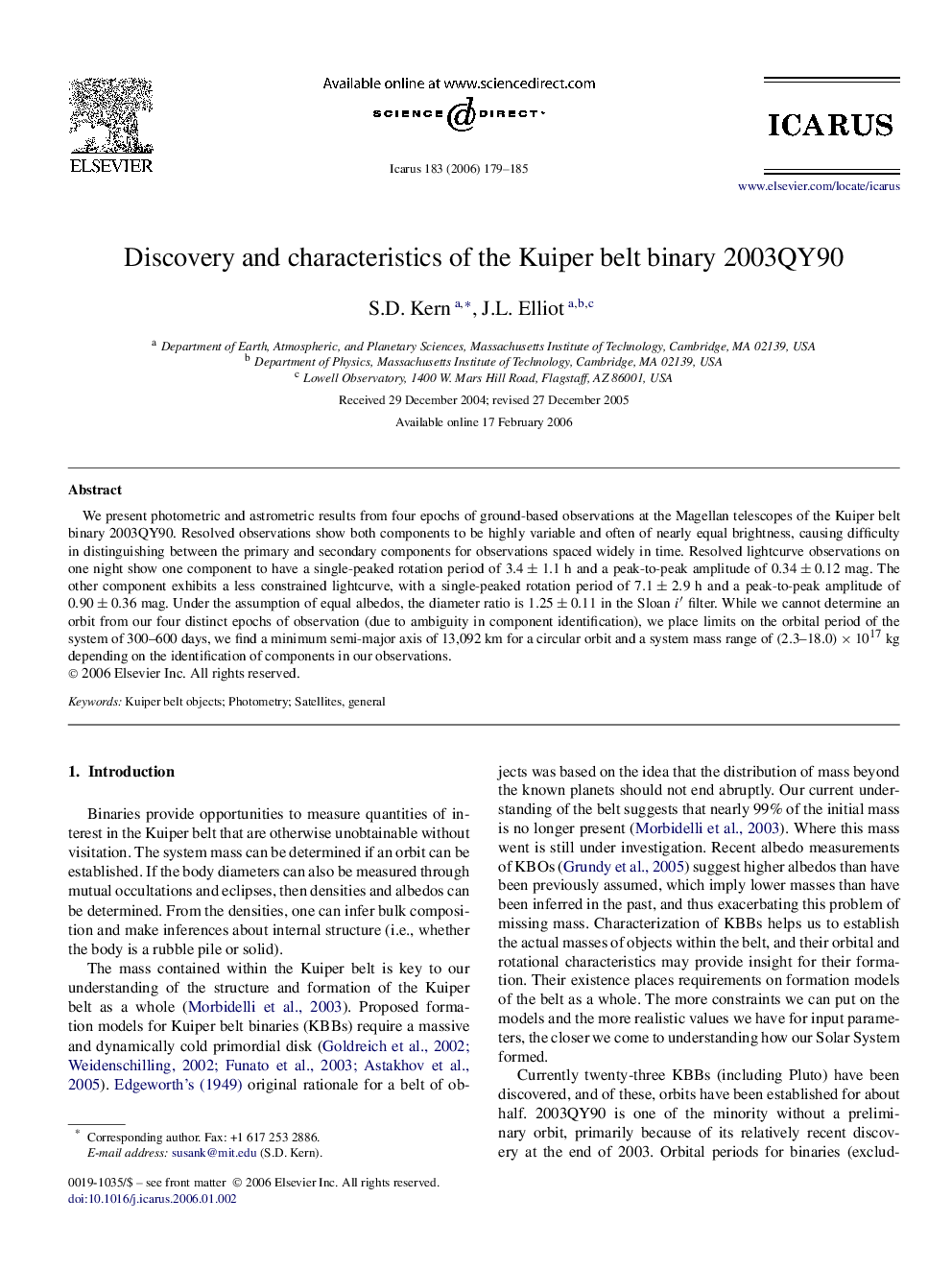| Article ID | Journal | Published Year | Pages | File Type |
|---|---|---|---|---|
| 1776086 | Icarus | 2006 | 7 Pages |
Abstract
We present photometric and astrometric results from four epochs of ground-based observations at the Magellan telescopes of the Kuiper belt binary 2003QY90. Resolved observations show both components to be highly variable and often of nearly equal brightness, causing difficulty in distinguishing between the primary and secondary components for observations spaced widely in time. Resolved lightcurve observations on one night show one component to have a single-peaked rotation period of 3.4±1.1h and a peak-to-peak amplitude of 0.34±0.12mag. The other component exhibits a less constrained lightcurve, with a single-peaked rotation period of 7.1±2.9h and a peak-to-peak amplitude of 0.90±0.36mag. Under the assumption of equal albedos, the diameter ratio is 1.25±0.11 in the Sloan iâ² filter. While we cannot determine an orbit from our four distinct epochs of observation (due to ambiguity in component identification), we place limits on the orbital period of the system of 300-600 days, we find a minimum semi-major axis of 13,092 km for a circular orbit and a system mass range of (2.3-18.0)Ã1017kg depending on the identification of components in our observations.
Related Topics
Physical Sciences and Engineering
Earth and Planetary Sciences
Space and Planetary Science
Authors
S.D. Kern, J.L. Elliot,
